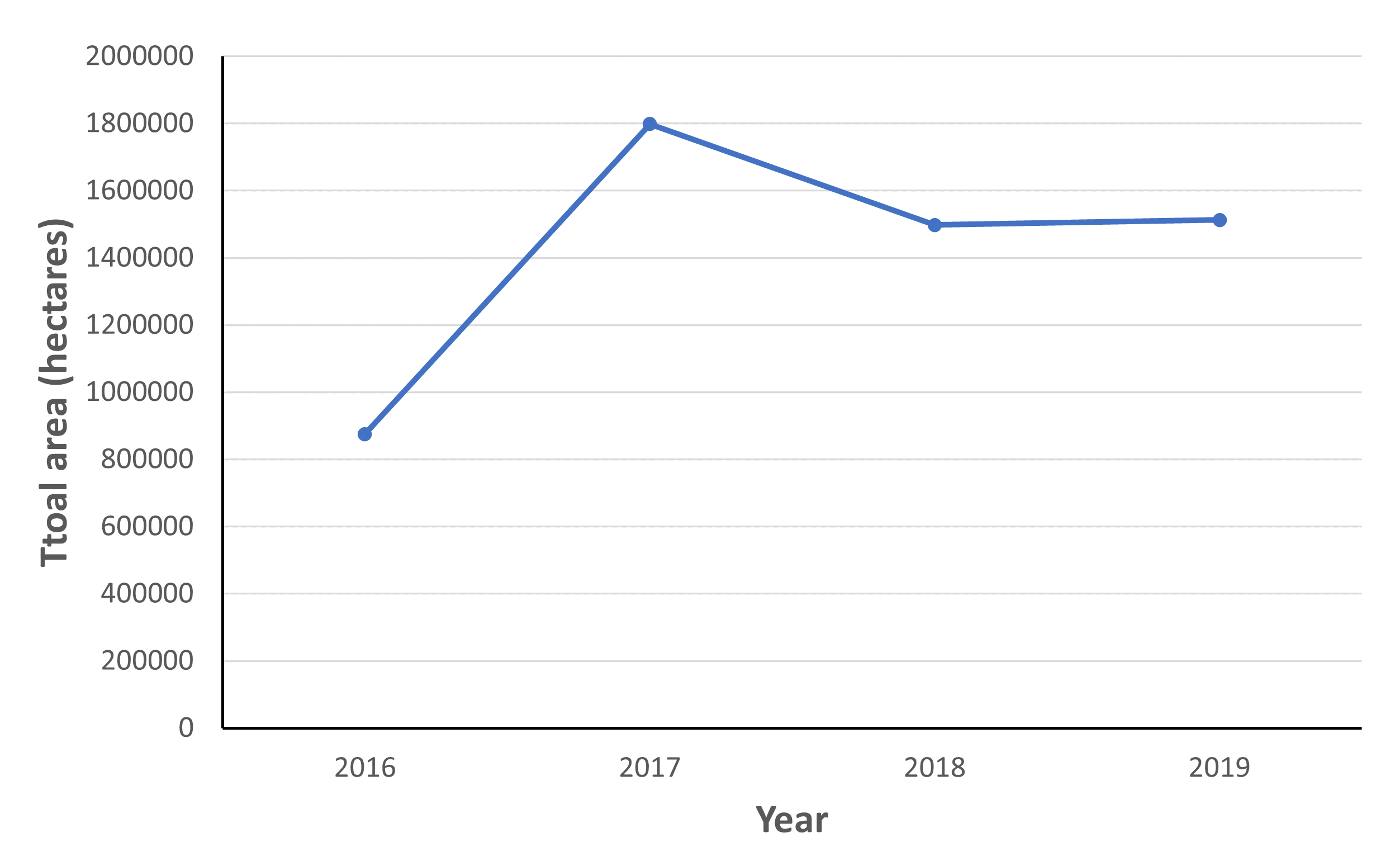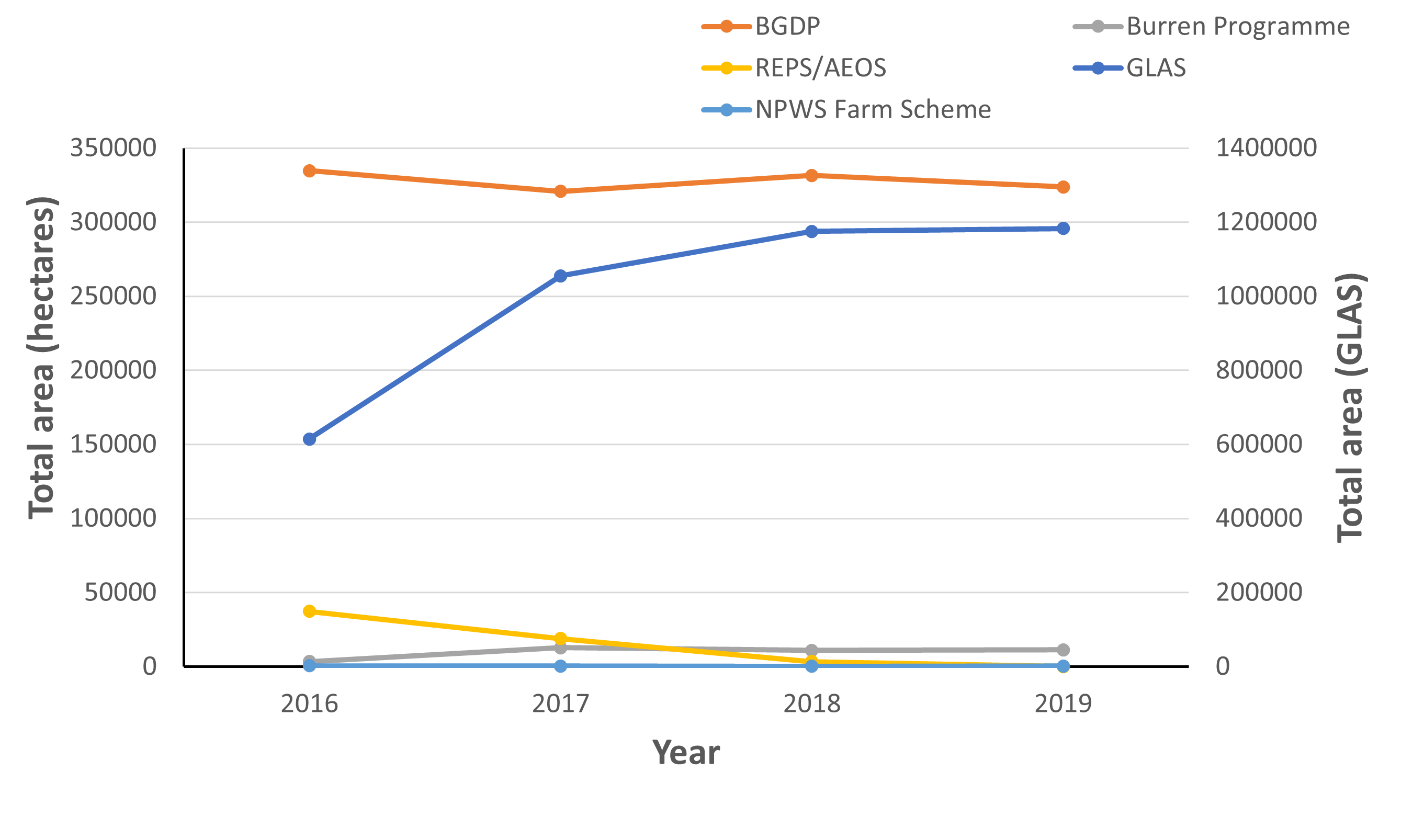| Current status | 2019 |  |
| Short term status | 2016 - 2019 |  |
| Long term status |  |
Click on the charts below in order to see the full resolution versions.
Agri-environmental schemes were established to encourage farmers to adapt to more sustainable and eco-friendly farming practices; under such schemes farmers are rewarded monetarily for implementing specified environmental practices. Determining the area of land managed under agri-environmental scheme is paramount in determining the proportion of land that is being farmed in a more sustainable and environmentally focused way. According to the Farm Structure Survey 2016 (carried out by the Central Statistics office) the total agricultural area in Ireland was 4,455,800 hectares. In 2019, 34% of this land (1.5 million hectares) was managed under the agri-environmental schemes described in this biodiversity indicator.
The agri-environmental schemes that are included in this biodiversity indicator are:
GLAS (Green Low-Carbon Agri-Environmental Scheme) – This scheme promotes farming practices that are focused on environmental benefits related to climate change mitigation, improving water quality, and preserving priority habitats and species.
BDGP (Beef Data and Genomics Scheme) – This scheme encourages farmers to undertake a range of actions designed to accelerate genetic improvement in the beef herd which will result in climate benefits associated with reduced greenhouse gas emissions.
Burren Programme – Specifically focused on the conservation of the limestone landscape in the Burren region of Clare and Galway. It promotes a particular farming model that couples traditional farming practices with scientific assessment of environmental health and field level.
REPS/AEOS – The Rural Environment Protection Scheme (REPS) was the first nationwide scheme aimed at conserving natural features on farm. Farmers were offered financial support to create a plan for environmental protection which had to include pollution control measures. The Agri Environment Options Scheme (AEOS) provided financial support for farmers to help conserve and promote biodiversity, encourage water quality management, and combat climate change.
NPWS Farm Plan Scheme - The National Parks and Wildlife Service runs a relatively small scale Farm Plan Scheme, working hand in hand with farmers to develop bespoke solutions to create, maintain and enhance conditions for some of Ireland's rarest and most threatened flora and fauna. In turn, the experience gleaned from such efforts can inform more intuitive, flexible, and effective measures under the larger AES co-financed by Europe.
Payments to areas facing natural or other specific constraints, Organic Farming or the EIPs/Locally Led schemes including the Hen Harrier and the Fresh water Pearl Mussels projects were not included in this biodiversity indicator.
More information on the Rural Development Programme can be found here:
https://www.cso.ie/en/releasesandpublications/ep/p-fss/farmstructuresurvey2016/


